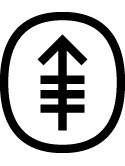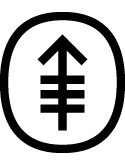Comparative trial of cytarabine and thioguanine in combination with amsacrine or daunorubicin in patients with untreated acute nonlymphocytic leukemia: Results of the L-16M protocol Journal Article
| Authors: | Berman, E.; Arlin, Z. A.; Gaynor, J.; Miller, W.; Gee, T.; Kempin, S. J.; Mertelsmann, R.; Andreeff, M.; Reich, L.; Nahmias, N.; Clarkson, B. |
| Article Title: | Comparative trial of cytarabine and thioguanine in combination with amsacrine or daunorubicin in patients with untreated acute nonlymphocytic leukemia: Results of the L-16M protocol |
| Abstract: | Ninety-six patients with de novo acute nonlymphocytic leukemia (ANLL) were randomized to receive either daunorubicin (50 mg/m2, IV) on days 1-3; cytarabine (Ara-C) (25 mg/m2, IV) bolus, followed by 160 mg/m2 as a continuous IV infusion daily for 5 days and 6-thioguanine (6-TG) (100 mg/m2 po) every 12 hr daily for 5 days (DAT); or amsacrine (190 mg/m2, IV) on days 1-3 with Ara-C and 6-TG at the above doses (AAT). Patients achieving complete remission (CR) then received two courses of consolidation therapy with the same combination that had induced remission but at slightly reduced total doses. Patients ≤ age 40 with an HLA-identical sibling donor underwent allogeneic transplantation, usually after consolidation therapy. The remaining patients were then randomized to receive either maintenance therapy (alternating cycles of vincristine/methotrexate, cyclophosphamide/6-TG, daunorubicin/hydroxyurea and Ara-C/6-TG) or no further treatment. Ninety-two patients were evaluable for response. Twenty-five of the 46 patients (54%) who received DAT and 32 of the 46 patients (70%) who received AAT achieved CR (p = 0.13). When patients were stratified by age, however, remission induction advantage with AAT became statistically significant (p = 0.03). Additionally, more patients achieved CR following one course of AAT than following one course of DAT (48% vs 28%, p = 0.03). Overall survival in the AAT group was improved as well (p = 0.01). Too few patients were randomized on the maintenance arm of the protocol to make interpretation meaningful. Non-hematologic toxicity was generally comparable in both arms. In conclusion, patients with de novo ANLL who received AAT had a higher remission incidence and slightly longer survival compared to patients who received DAT. Further investigation of this drug combination in untreated patients with ANLL is warranted. |
| Keywords: | adolescent; adult; aged; major clinical study; hydroxyurea; drug efficacy; cytarabine; methotrexate; antineoplastic combined chemotherapy protocols; drug administration schedule; cyclophosphamide; vincristine; age factors; daunorubicin; amsacrine; tioguanine; intravenous drug administration; oral drug administration; acute nonlymphocytic leukemia; leukemia, nonlymphocytic, acute; prognosis; human; male; female; priority journal; thioguanine |
| Journal Title: | Leukemia |
| Volume: | 3 |
| Issue: | 2 |
| ISSN: | 0887-6924 |
| Publisher: | Nature Publishing Group |
| Date Published: | 1989-02-01 |
| Start Page: | 115 |
| End Page: | 121 |
| Language: | English |
| PUBMED: | 2911205 |
| PROVIDER: | scopus |
| DOI/URL: | |
| Notes: | Article -- Export Date: 14 April 2020 -- Source: Scopus |
Citation Impact
Related MSK Work










